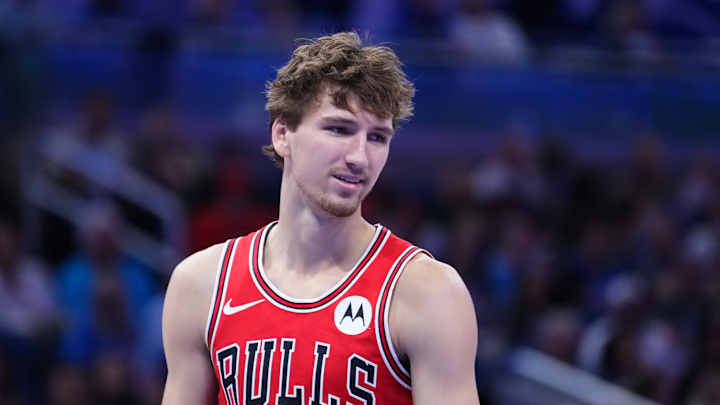“He has not arrived. He just hasn’t. And that’s just the truth. And I love Matas and think he’s got an unbelievable runway to be an outstanding player in this league if he keeps his drive and his motivation and doesn’t think he’s arrived."
Chicago Bulls head coach Billy Donovan uttered those words about up-and-coming sophomore Matas Buzelis ahead of the Bulls’ regular-season opener. Donovan didn’t mean them as a slight to Buzelis’ talent—he’s well aware of the 21-year-old’s All-Star ceiling. Rather, the coach is intent on keeping his young forward “grounded and driven.”
Thus far, Donovan's approach has paid off. Through three games, Buzelis is averaging 13.3 points, 4.7 rebounds, 1.3 assists, and 1.0 blocks per game while converting 45.2 percent of his field-goal attempts. The Hall of Fame coach has shown even more trust in Buzelis this season, keeping him on the floor against the Orlando Magic despite early foul trouble—a game in which he ultimately fouled out midway through the fourth quarter and finished with merely three po
However, Donovan's trust extends beyond simply keeping the sophomore on the floor amid foul trouble—he’s also given Buzelis greater offensive responsibility.
Buzelis’s expanded role has improved 3 parts of his game
As evidenced by his increases in field-goal, three-point, and free-throw attempts from a season ago, Buzelis clearly has more of a green light, but it’s not just about taking more shots. He’s attacking the rim more often, pulling up off the dribble with greater confidence, and getting more touches within the offense.
A season ago, the 6-foot-10 forward averaged just 2.7 drives per game, functioning more as a play finisher than a creator. He wasn’t particularly effective attacking the rim either, shooting only 44.7 percent on drives as a rookie. This season, however, Buzelis is up to 6.3 drives per contest—fourth-most on the team—and there’s an argument he should be attacking even more often. He’s averaging 5.3 points per game off drives while converting 60.0 percent of those attempts.
Secondly, nearly all of Buzelis’s attempts last season (93 percent) came either at the rim or on spot-up jumpers. This year, he’s added pull-ups to his arsenal, with roughly one-fifth of his shots now coming off the dribble. He’s averaging one pull-up two and one pull-up three per game. And, somewhat surprisingly, he’s converting those off-the-dribble looks at a higher rate than his catch-and-shoot attempts.
Lastly, the sharp rise in touches shows that Buzelis has become a far more integral part of Chicago’s offense. His touches have nearly doubled from a season ago, jumping from 25.2 as a rookie to 44.7 as a sophomore. Beyond sheer volume, his seconds per touch, dribbles per touch, and time of possession have all increased significantly. He’s not just handling the ball more because of added minutes; he’s simply doing more with it.
Buzelis is no longer the player with limited, curtailed responsibility—he’s taken the leap fans hoped for, and ultimately expected. His offensive game is blossoming before our eyes as he’s earned trust beyond being just a spot-up shooter or cutter. He’s now a creator.
Developing as a facilitator will be the next step, but for now, his ability to score in a variety of ways with the ball in his hands marks a massive improvement from a season ago.
